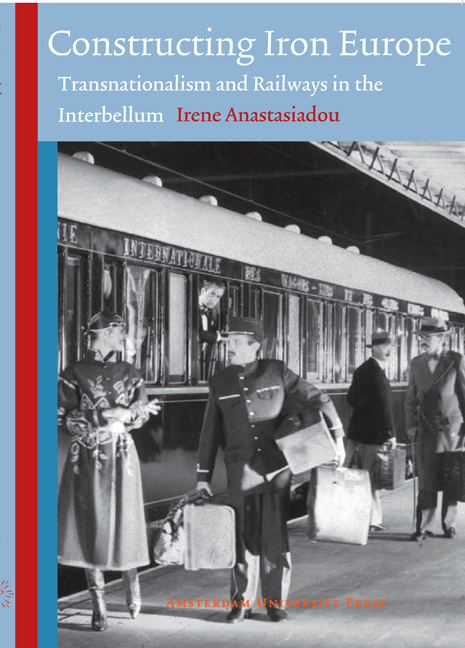Book contents
- Frontmatter
- Acknowledgements
- Contents
- Abbreviations
- 1 Introduction
- 2 Europe in Crisis and Railway Visions
- 3 Shifting Railway Regime
- 4 European Integration, European Fragmentation
- 5 Constructing the National, Constructing the European: Greece
- 6 Uncovering Railway Europe
- Bibliography
- Summary
- Curriculum Vitae
- Appendix I Timeline of Conferences and Conventions held in the Early years After the war, Concerning Railways:
- Appendix II Schedule of International Expresses in the 1930s
- Appendix III List of Illustrations
6 - Uncovering Railway Europe
- Frontmatter
- Acknowledgements
- Contents
- Abbreviations
- 1 Introduction
- 2 Europe in Crisis and Railway Visions
- 3 Shifting Railway Regime
- 4 European Integration, European Fragmentation
- 5 Constructing the National, Constructing the European: Greece
- 6 Uncovering Railway Europe
- Bibliography
- Summary
- Curriculum Vitae
- Appendix I Timeline of Conferences and Conventions held in the Early years After the war, Concerning Railways:
- Appendix II Schedule of International Expresses in the 1930s
- Appendix III List of Illustrations
Summary
Railway Internationalization Patterns
The material discussed in this book provides an insight into two paradigms of internationalization that were expressed in the interwar years. The first paradigm involved constructing transnational railway arteries by reconfiguring the existing railway infrastructure and constructing new complementary lines. This paradigm also drew on technical developments, such as electrification and the construction of sub-marine tunnels. Construction of new lines did take place in the interwar years, but mainly within the nation state. As the chapter two indicates, proposals for establishing new international railway arteries were put forward during periods of international crisis. It was in these years that engineers and politicians put forward grandiose ideas for restructuring the railway infrastructure in Europe. This reveals that individuals looked at railways, transportation and infrastructures more generally as a means through which a new political order would be established. Those plans led to the establishment of the Simplon Orient Express, which provided a connection from western and central Europe to the East, avoiding territories of the central empires throughout the interwar years. Such projects could be seen as the voice of engineers proposing how to escape from international crisis, or as a criticism of the de-centralized and nationally focused way in which railway networks had developed till then. The words of Geo Gerald in his opening speech of the inter parliamentary union of December 1918 are characteristic of these ideas. In this he noted that
‘A new period of prosperity will open up for France, provided that all those who desire the reconstruction of our economic edifice co-ordinate their efforts… Thus, in order to repair the enormous mistake in the general route and timetables of our railways, which has resulted in the traffic of all the departments being concentrated on Paris, the creation of a line was proposed that would connect Switzerland to the Ocean. In order to attract traffic between the East and the two Americas to France, the design of an immense line was projected that would connect Bordeaux to Odessa through Lyon, Turin, Milan, Venice, Trieste, Belgrade and Bucharest…’
- Type
- Chapter
- Information
- Constructing Iron EuropeTransnationalism and Railways in the Interbellum, pp. 243 - 254Publisher: Amsterdam University PressPrint publication year: 2012



